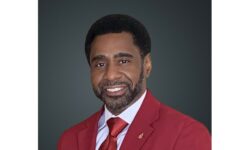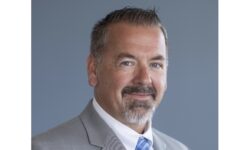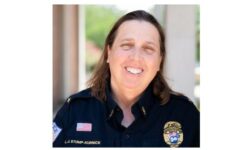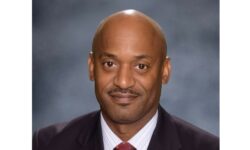UNT Denton Police Build Bridges with Community Policing
CS Higher Ed. Dir. of the Year Ed Reynolds’ community policing has improved UNTPD’s relations with students and increased incident reporting.

Congratulations to Campus Safety 2018 Higher Education Director of the Year Ed Reynolds.
“In my first meeting with the UNT president of the League of United Latin American Citizens following the passage of Texas Bill 4, she asked me when the UNT Police were going to start checking student immigration papers,” recalls the chief. “That hit me pretty hard because that was truly their belief. I dispelled those rumors, [telling them] that is not our role and not our mission. We’re here for the safety of all students.”
(UNT’s approach to enforcing Senate Bill 4 is like many cities in Texas that ask about a person’s immigration status only in very rare cases.)
Because the issue was so triggering, Reynolds instinctively knew that he would need to personally reach out to the groups.
“In order to get cooperation and understanding, I had to make a lot of those phone calls myself,” he says. “A lot of times as chiefs we tend to get really busy and delegate those things. But there are certain things that are sensitive in nature where that won’t work. I want [the groups] to feel comfortable to pick up the phone and call me if they have an issue.”
Department Holds Many Outreach Events
Reynolds and his department have applied the community policing approach to the entire campus, not just to minority groups. On a regular basis, officers are interacting with students at various times and in various situations.
The department also hosts events, such as “Pizza with Police” and “Coffee with Cops,” which attract hundreds of students who then interact with Reynolds and his officers. Additionally, UNTPD officers regularly give safety presentations to groups around campus as well as new students, faculty and staff members. Other ways the department reaches out to the community include videos and social media.
Entire Department Embraces Community Policing
Reynolds is a firm believer that the entire campus public safety and security department needs to embrace community policing in order for the strategy to be successful.
“It’s something that everyone has to understand the importance of, and it has to certainly start with the chief and go all the way down,” he says.
“I remember the day when if you saw a police officer playing basketball with a group of students, the old mentality was, ‘Why’s he doing that? He’s not doing his job.’ Now the new mentality, or I would say what it should’ve always been, is ‘Look, he’s bridging gaps with the community.’ They see him as something other than a police officer. Now he’s a person.
“I think most of our officers, especially our newer generation of officers, they love that stuff,” Reynolds adds. “They like social media. They like posting stuff. I think within reason you have to pull back the curtain and allow our folks to go out and interact in a positive way with your community. You can’t operate in a silo. Without a commitment to community engagement, you’re never going to bridge those gaps, and there’s always going to be distrust.”
Efforts Lead to Increased Incident Reporting
Although community policing takes a lot of work, Reynolds believes it is worth the effort.
“To try and do all of these different things, there are many police folks who would say that’s outside the normal scope of law enforcement’s duties,” he says. “I would tell you that this is completely in the scope of what law enforcement’s duties are. We are in an era of policing where we cannot be that force that no one feels comfortable talking to or no one feels comfortable approaching or bringing problems to.”
And judging by the 19 percent increase in the number of reports of suspicious activity and improved relations with students, UNTPD’s community policing strategy is working. There is also anecdotal evidence that the strategy is paying off.
“Just the number of phone calls that we get now from individuals that say, ‘Hey, I see something over here that doesn’t look right.’ The number of those types of calls has increased dramatically, and that’s because we’ve created a welcoming environment for the police department in our community.”
See the full photo gallery on Campus Safety’s Director of the Year Ed Reynolds here.
If you appreciated this article and want to receive more valuable industry content like this, click here to sign up for our FREE digital newsletters!
 Leading in Turbulent Times: Effective Campus Public Safety Leadership for the 21st Century
Leading in Turbulent Times: Effective Campus Public Safety Leadership for the 21st Century
This new webcast will discuss how campus public safety leaders can effectively incorporate Clery Act, Title IX, customer service, “helicopter” parents, emergency notification, town-gown relationships, brand management, Greek Life, student recruitment, faculty, and more into their roles and develop the necessary skills to successfully lead their departments. Register today to attend this free webcast!














